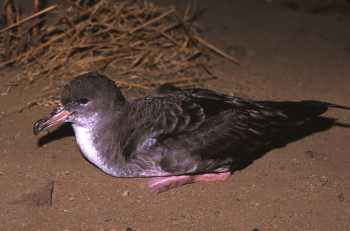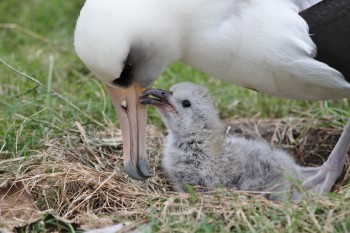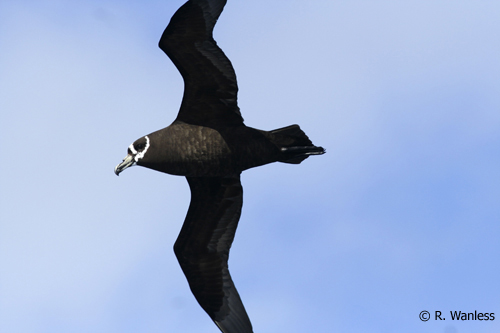The Eleventh Chilean Ornithological Congress (XI Congreso Chileno de Ornitología) was held last week in La Serena, Chile. At the congress a number of papers was given on the Vulnerable Pink-footed Shearwater Puffinus creatopus (a candidate for listing within the Agreement) as well as on aspects of seabird mortality and mitigation in Chilean fisheries.

Pink-footed Shearwater, photograph by Peter Hodum
The papers follow by authors and title:
Luis Adasme & Jorge Azocar. Implementación de un programa de observación cientifica en las pesquerías demensales zona sur austral: problemas, soluciones y desafíos con aves marinas.
Marcelo Garcia Alvarado. Convenios internacionales y reducción de la captura incidental de aves marinas en Chile.
Peter Hodum, Erin Hagen, Valentina Colodro & Verónica López. Estado y conservación de las aves marinas del Archipiélago Juan Fernández. [Pink-footed Shearwater breeding site]
Jeffrey Mangel, Josh Adams, Joanna Alfaro-Shigueto, Peter Hodum, David Hyrenbach, Valentina Colodro, Paola Palavecino, Miguel Donoso & Verónica López. Las implicaciones de conservación de los movimientos de la fardela blanca (Puffinus creatopus) e interacciones con pesquerías en Sudamérica evaluadas usando múltiples métodos.
Graham Robertson, Carlos Moreno, Javier A. Arata, Steven G. Candy, Kieran Lawton, Jose Valencia, Barbara Wienecke, Roger Kirkwood, Phil Taylor & Cristián G. Suazo. Incremento de los números del Albatros de Ceja Negra en Chile en respuesta a la reducción de mortalidad en pesquerías.
Alejandro Simeone & Luis A. Cabezas. Tendencias numéricas de Fardelas (Puffinus spp.) frente a Valparaíso: un panorama cuesta abajo.
Cristián G. Suazo, Luis A. Cabezas, Carlos A. Moreno, Javier A. Arata, Guillermo Luna-Jorquera, Alejandro Simeone, Luis Adasme, Jorge Azócar, Marcelo García, Oliver Yates & Graham Robertson. La captura incidental de aves marinas en Chile: una síntesis de sus impactos y una revisión de las estrategias para contribuir a la reducción de un fenómeno global.
Oliver Yates, Cristian G. Suazo, Luis Adasme, Jorge Azocar, Marcelo Garcia Alvarado & Graham Robertson. Captura incidental de aves marinas en las pesquerias chilenas: soluciones para una pesca sustentable.
John Cooper, ACAP Information Officer, 25 October 2014

 English
English  Français
Français  Español
Español 


